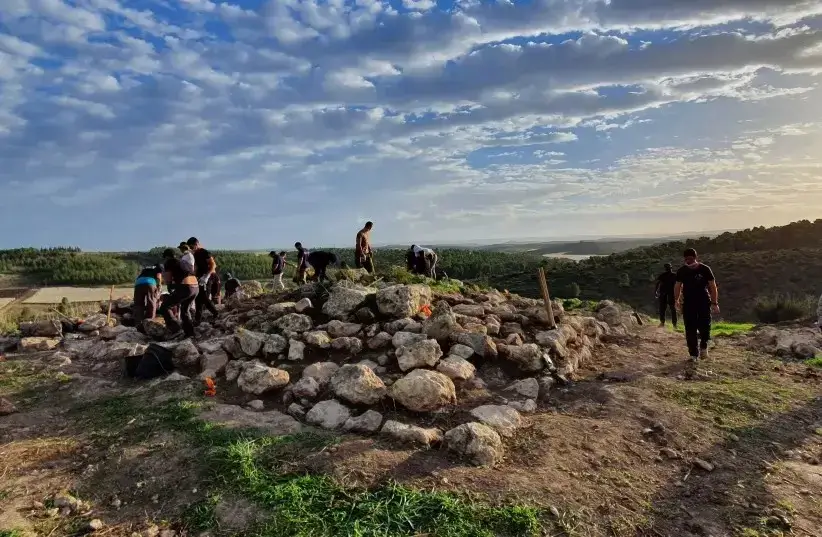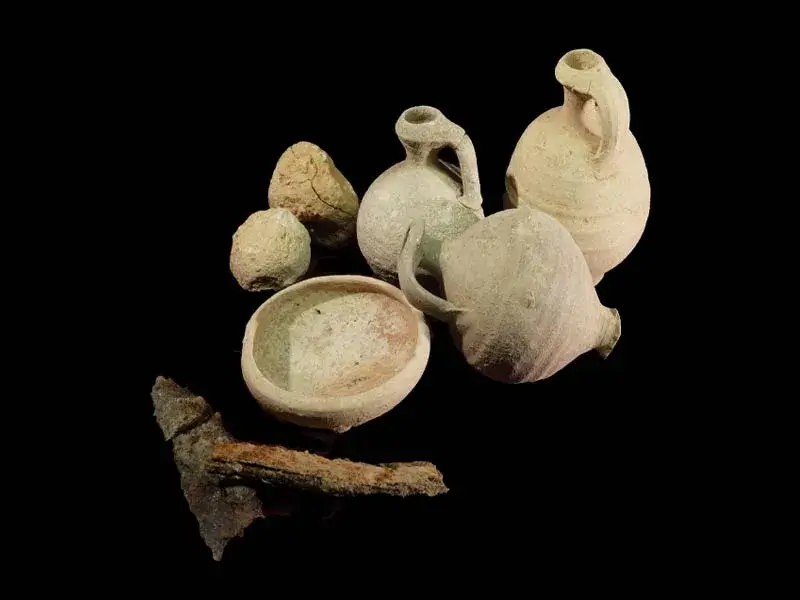
Israeli Archaeologists Unveil Hellenistic Fortress Destroyed By Jewish Forces In 112 B.C.E.
Hasmonean ruler John Hyrcanus I, a nephew of Maccabean Revolt leader Judah Maccabee, razed the fortified structure during his conquest of Idumea
By: David Kindy | Smithsonian
Every year, Jews around the world celebrate Hanukkah, or the Festival of Lights. According to the Talmud, the tradition dates back to the Maccabean Revolt (167 to 160 B.C.E.), in which Jewish rebels recaptured the Temple of Jerusalem from occupying Hellenistic forces and lit a candle that was only supposed to burn for one day. Instead, it lasted eight days.
Ahead of the holiday, which begins on November 28 this year, archaeologists in Israel have unveiled a small fortress destroyed by the nephew of the rebellion’s leader, Judah Maccabee, reports Rossella Tercatin for the Jerusalem Post. At a dig in the Lachish Forest, located about 40 miles southwest of Jerusalem, researchers with the Israel Antiquities Authority (IAA) discovered charred wooden beams, weapons, pottery and coins from the fortified structure. Per Agence France-Presse (AFP), the structure’s stone walls measured nearly ten feet thick.
“The excavation site provides tangible evidence of the Hanukkah stories,” say excavation directors Saar Ganor, Vladik Lifshits and Ahinoam Montagu in a statement. “It appears that we have discovered a building that was part of a fortified line erected by the Hellenistic army commanders to protect the large Hellenistic city of Maresha from a Hasmonean offensive.”
During the Maccabean Revolt, Jews under the command of Judah (also known as Judas Maccabeus) rebelled against the occupying forces of the Seleucid Empire, a Hellenistic kingdom formed from lands once conquered by Alexander the Great. After successfully recapturing Jerusalem in 164, Judah briefly wielded power, only to die in battle in 160.
According to Haaretz’s Elon Gilad, Judah’s surviving brothers continued his fight against the Seleucids but eventually agreed to an unsteady peace. One sibling, Jonathan, was elected high priest of Jerusalem and enjoyed a relative amount of autonomy but was betrayed and murdered by a Seleucid general in 143. Simon, the last living brother, succeeded Jonathan, firmly establishing the rule of the so-called Hasmonean dynasty before his own assassination in 135.
Mysterious 3,800-Year-Old Canaanite Arch & Stairway Unearthed In Israel
Simon’s son John Hyrcanus I, who became king of Judea upon his father’s death, led the Hasmonean soldiers who destroyed the Seleucids’ seven-room, 2,422-square-foot fortress in the Lachish Forest, reports Ruth Schuster for Haaretz.
“Based on the finds and coins, the building’s destruction can be attributed to the Hasmonean leader John Hyrcanus’ conquest of the region of Idumea around 112 B.C.E.,” say the site directors in the statement
Archaeologists discovered many of the artefacts under a 20-inch layer of detritus. They removed thousands of stones that fell after the fortress was attacked, unearthing items including slingshots, iron weapons and coins.

“The impressive discoveries from the excavations in the Lachish region demonstrate the history of our great and wonderful land and the story of Hanukkah,” says Israeli housing and construction minister Zeev Elkin in the statement.
No human remains were discovered during the archaeological dig, leading experts to believe the fort was evacuated prior to the attack.
“Our theory is that the Seleucids blocked the entrance of the fortress and fled to the city as their enemies approached,” Montagu tells the Jerusalem Post. “As the Hasmoneans reached the structure, they set it on fire.”
She adds, “We uncovered only a few animal bones and a fragment of a sword. If a battle was fought here, there would have been a lot more remains, including human remains and artefacts.”
The fortress was first discovered a few years ago during a survey. Archaeologists are continuing the excavation in hopes of finding more artefacts. After the dig comes to a close, the building will undergo conservation and be opened to the public.
* * *
NEXT UP!
Gobekli Tepe: The World’s First Temple?
Six miles from Urfa, an ancient city in south-eastern Turkey, Klaus Schmidt has made one of the most startling archaeological discoveries of our time: massive carved stones about 11,000 years old, crafted and arranged by prehistoric people who had not yet developed metal tools or even pottery. The megaliths predate Stonehenge by some 6,000 years.
The place is called Gobekli Tepe, and Schmidt, a German archaeologist who has been working here more than a decade, is convinced it’s the site of the world’s oldest temple.
* * *
READ MORE: This Ancient Maya City Was Hidden In The Jungle For More Than 1,000 Years
More Archaeology News: Guanches: Ancient Mummies of The Canary Islands (Video)
Enjoyed it? Please take a moment to show your support for Collective Spark.
We’d love to hear from you! If you have a comment about this article or if you have a tip for a future Collective Spark Story please let us know below in the comment section.
